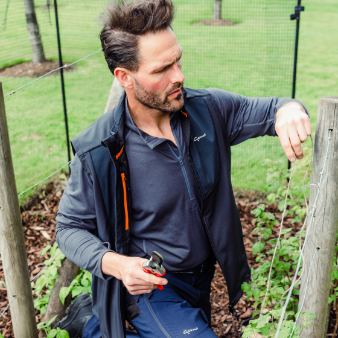Winter bulbs at eye level

At this time of year, we often have to carefully crawl through a border to appreciate those early risers - the spring bulbs. But what about growing them at eye level?
Several years ago, I decided to build a bin store in order to hide the unsightly wheelie bins and keep my logs dry, but I freely admit that I did have an ulterior motive. The sunny south-facing location would be just prefect for growing alpines, herbs and early bulbs. The bin store roof is constructed with a ‘tray’ that contains the soil, which is an equal mix of horticultural grit, John Innes and sand, the bed is sloping to assist with drainage. At the rear the soil depth is about 100mm and narrows down to 25mm along the front edge, where there is a line of only gravel and some holes to allow drainage and avoid waterlogging.
About a month ago the exquisite Narcissus bulbocodium ‘Artic Bells’ was the first to appear, a delicate-looking flower but deceptively tough and resilient in the mid-winter freezing temperatures. Next to appear are the tiny spears of emerging Crocus, my choices were - C. ‘Orange Monarch’ which is one of the earliest to flower, with brassy gold petals and brown veining also slightly scented, combined with C. ‘Prins Claus’ and C. ‘Spring Beauty’ in complimentary blue and purple tones.
I really recommend planning an eye-level planting scheme using bulbs, ready for next winter as it brings such cheer at the bleakest time of year.







